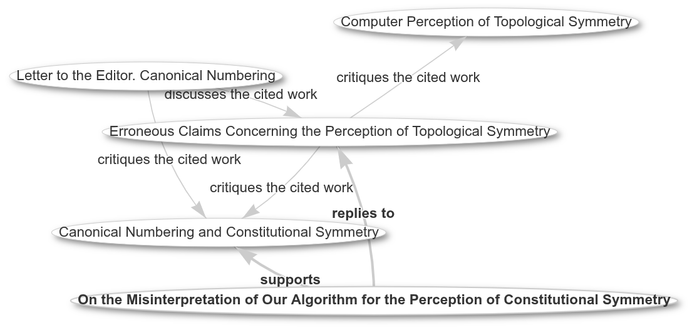Huh. Was using my new #cheminformatics fingerprint generator code generator on the PubChem fingerprints which can be defined by a single match.
It told me bits 472 and 506 are the same.
I pulled up the primary documentation, at https://ftp.ncbi.nlm.nih.gov/pubchem/specifications/pubchem_fingerprints.txt and .. indeed they are, with the same patterns in reverse order!
472 C:N:C-C
506 C-C:N:C
The full list of such pairs is:
472/506, 585/657, 589/626, 620/632, 462/537, 581/642, 594/666, 470/520, 584/677, 595/608, 634/668, 490/556, 660/678


